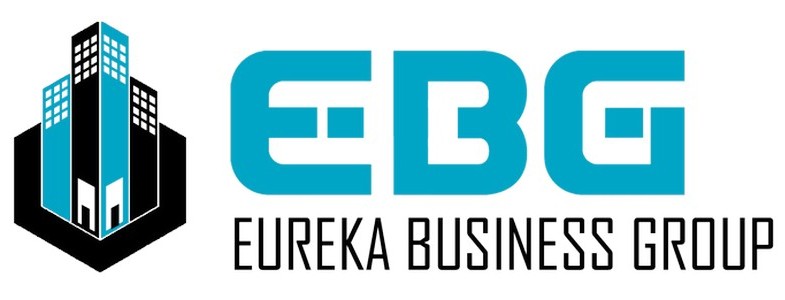- Home
- Commercial Broker Services
- Business Broker Services
- Business Owners Resources
- Retail Location Scouting: How to Find the Ideal Space for Your Shop
Retail Location Scouting: How to Find the Ideal Space for Your Shop
Choosing the right location for a retail shop is a critical decision that can determine the success or failure of a business. Whether you’re a seasoned entrepreneur or a first-time shop owner, finding the ideal space requires thorough research, strategic thinking, and a keen understanding of market dynamics. In this blog post, we will explore the essential factors to consider when scouting for a retail location, along with practical tips to help you find the perfect spot for your shop.
1. Understand Your Target Market
The first step in retail location scouting is to have a clear understanding of your target market. Who are your ideal customers? What are their shopping habits, preferences, and demographics? This information will guide your decision-making process and help you identify areas where your target market is concentrated.
Market Research
Conducting market research is essential. Use tools like surveys, focus groups, and data analysis to gather insights into your potential customers. Online resources, such as demographic reports and consumer behavior studies, can also provide valuable information.
Customer Profiling
Create detailed customer profiles based on age, gender, income level, lifestyle, and purchasing behavior. Knowing your customers inside out will enable you to choose a location that aligns with their needs and preferences.
2. Analyze the Competition
Analyzing the competition is another crucial step in the scouting process. Identify who your direct and indirect competitors are, and study their locations, strengths, and weaknesses.
Competitive Landscape
Visit the areas where competitors are located. Observe their customer traffic, store layout, and marketing strategies. This will give you an idea of what works and what doesn’t in that particular market.
Market Saturation
Assess the level of market saturation. A location with too many similar businesses might make it difficult to stand out, while a place with no competitors might indicate a lack of demand. Striking the right balance is key.
3. Evaluate Foot Traffic and Visibility
Foot traffic and visibility are critical factors that can significantly impact your retail shop’s success. High foot traffic means more potential customers passing by your shop, while good visibility ensures that people can easily find and recognize your store.
Foot Traffic Analysis
Use tools like pedestrian counters and heat maps to measure foot traffic in different locations. Spend time in potential areas at various times of the day and week to get a sense of the flow and volume of people.
Visibility
Ensure your shop is easily visible from the street. Consider factors like signage, window displays, and lighting. A location on a busy street or within a popular shopping center can enhance your shop’s visibility and attract more customers.
4. Accessibility and Convenience
Accessibility and convenience play a significant role in attracting and retaining customers. Your shop should be easy to reach, both for customers and suppliers.
Transportation and Parking
Consider the availability of public transportation and parking facilities. A location near bus stops, subway stations, or with ample parking will make it easier for customers to visit your shop.
Delivery and Logistics
Think about the logistics of receiving inventory. A location with good access to delivery routes and loading docks can streamline your supply chain and reduce operational costs.
5. Assess the Local Economy
The local economy can influence your shop’s performance. Understanding the economic conditions and trends in the area will help you gauge the potential for growth and stability.
Economic Indicators
Look at indicators such as employment rates, median income, and local business growth. Areas with a thriving economy are likely to have a higher disposable income and a robust retail market.
Future Developments
Research any planned developments or infrastructure projects in the area. New residential or commercial developments can increase foot traffic and create new business opportunities.
6. Consider the Cost
The cost of renting or buying retail space is a major factor to consider. Balancing the location’s benefits with your budget is essential to ensure long-term sustainability.
Rent and Utilities
Compare rent prices in different locations. Take into account additional costs like utilities, maintenance, and property taxes. Ensure the total expenses fit within your budget without compromising other critical aspects of your business.
Lease Terms
Negotiate favorable lease terms. Look for flexibility in the lease agreement, such as options for renewal and the ability to sublet or terminate early if necessary.
7. Evaluate the Space
The physical space itself should meet the needs of your business. Consider the layout, size, and condition of the space.
Layout and Design
Ensure the layout allows for an optimal shopping experience. There should be enough space for product displays, checkout counters, and storage. A well-designed layout can enhance customer experience and increase sales.
Condition and Compliance
Check the condition of the building. Ensure it meets safety codes and accessibility standards. Factor in any renovation costs that might be required to bring the space up to your standards.
8. Consult Professionals
Consulting with professionals can provide valuable insights and support during the scouting process.
Real Estate Agents
Work with a commercial real estate agent who has expertise in retail spaces. They can help you find suitable properties, negotiate terms, and navigate legal requirements.
Legal and Financial Advisors
Consult with legal and financial advisors to ensure you understand all aspects of the lease agreement and the financial implications of your decision.
Conclusion
Finding the ideal location for your retail shop involves a combination of market research, competitive analysis, and practical considerations. By understanding your target market, analyzing the competition, evaluating foot traffic, ensuring accessibility, assessing the local economy, considering costs, evaluating the space, and consulting with professionals, you can make an informed decision that sets your business up for success.
Remember, the right location can be a powerful asset, driving foot traffic, enhancing visibility, and ultimately boosting your sales and profitability. Take your time, do your homework, and choose a location that aligns with your business goals and customer needs. Happy scouting!



